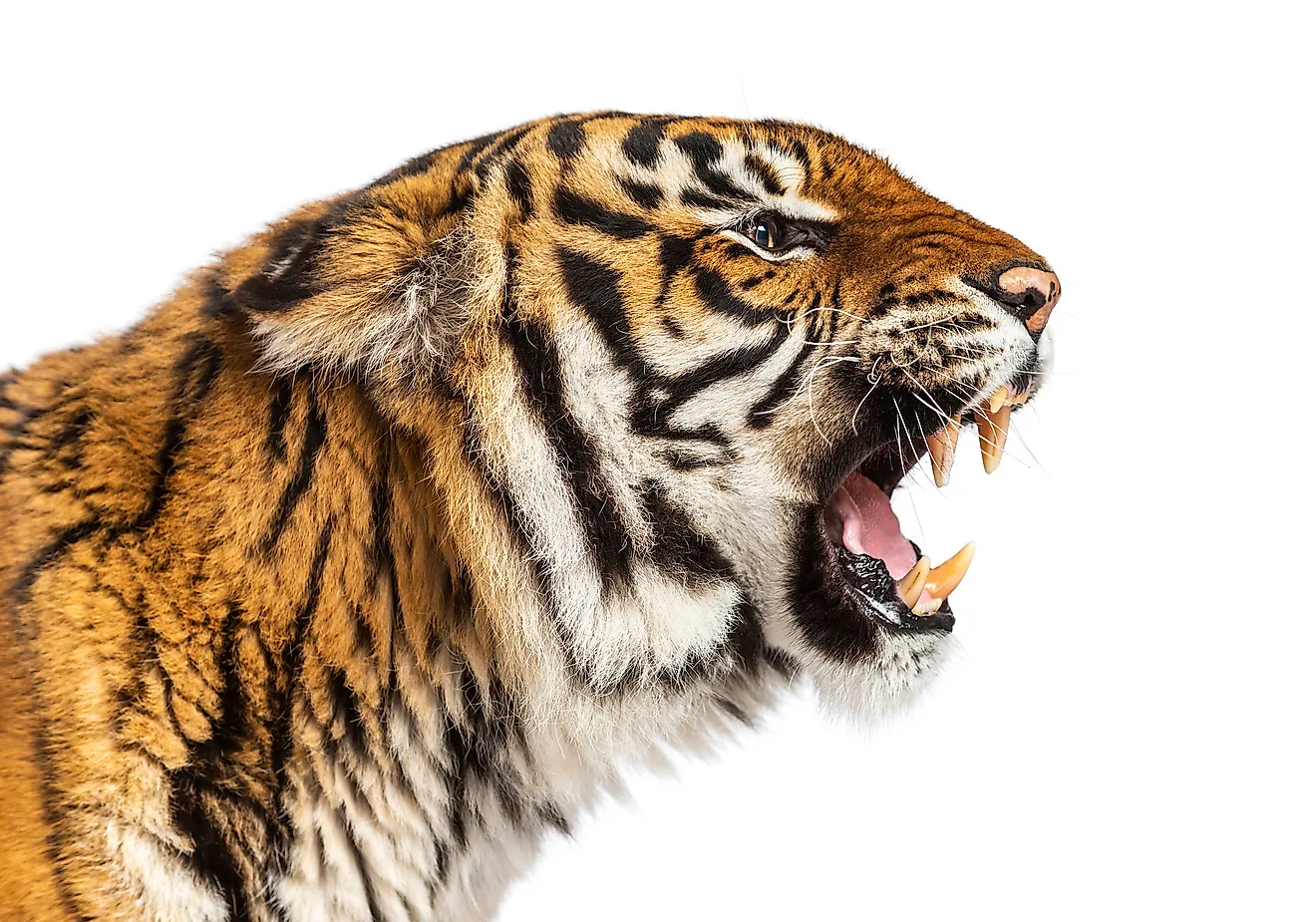
- Carnivores can be hyper carnivores, mesocarnivores or hypo carnivores based on how much meat they eat.
- A carnivore is any animal that needs the nutrients of other animals to survive.
- Carnivores are often formidable hunters, designed to capture and kill their prey.
Trophic Tiers
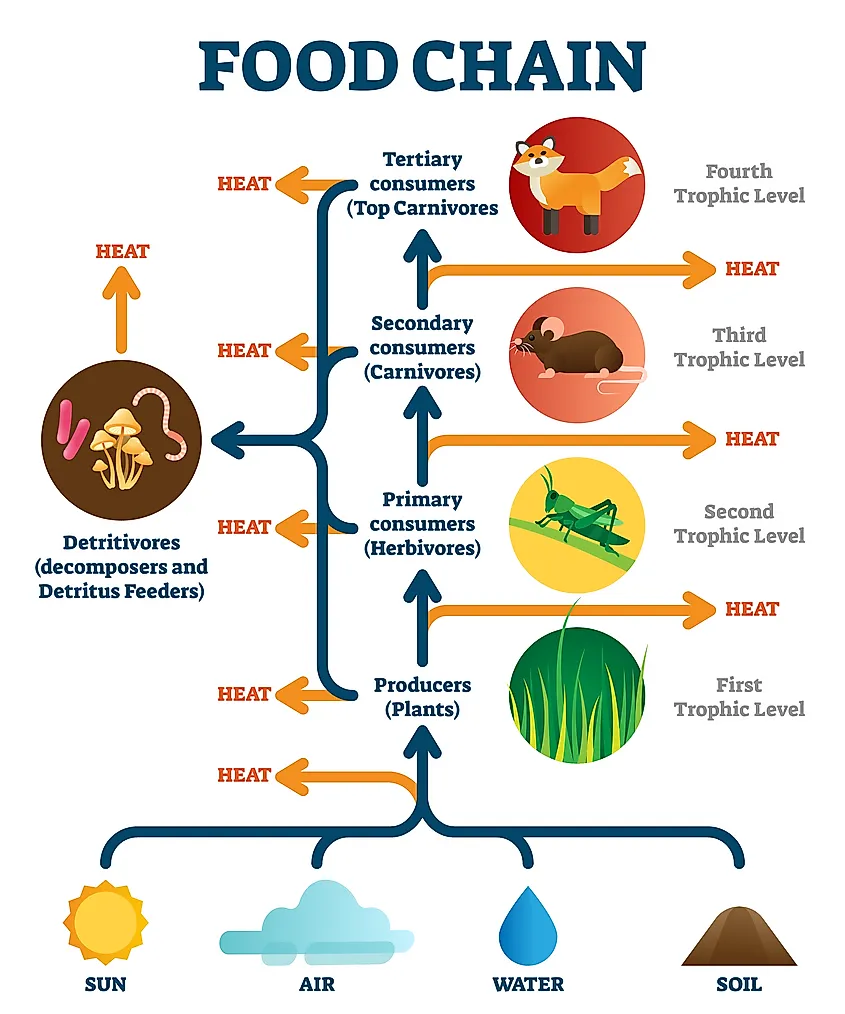
All organisms can be classified into one of three trophic groups, based on their dietary needs and habits. The first level is that of the autotrophs, which encompasses all organisms that can produce their own food. This includes most plants from grasses to algaes. The second trophic tier is known as the Herbivores. Herbivores are plant eaters, and obtain their nutrients from plant life, ie. by consuming autotrophs, such as grasses, seeds, grains, fruits and the like.
The third trophic level includes two main categories, distinguished by their primary nutritional sources. These categories include the Omnivores and Carnivores. Omnivores eat both a plant and animal based diet – this could include grains and insects, fish and plants, or even a mixture of a plant diet, fungi, and small prey. Because omnivores consume flesh, or meat, they are in the same trophic tier as carnivores.
Carnivores consist of animals that rely primarily or exclusively on meat to survive. The term itself is derived from latin words caro, meaning meat, and vorare which means to devour. This necessity for nutrients found in animal parts sets them apart from the other two trophic tiers. Additionally, their need for meat means that carnivores are either predatory animals, or scavengers, hunting other animals or feeding off dead ones. These trophic distinctions can also be labelled in terms of types of consumers. Herbivores are primary consumers, omnivores and carnivores are generally secondary consumers, and the third level, tertiary consumers, are carnivores that eat other carnivores. These animals tend to be apex predators, which are those animals that are at the top of any given food chain or food web.
Types of Carnivores
While carnivores are meat eating animals, this does not mean that their diet is exclusively other animals. While some carnivores, known as the obligate type, rely only on nutrients from other animals to survive, most carnivores have a diet that is mainly animal with some plant or fungi elements. The ratio of these two major food types in any carnivores diet helps to further classify them into one of three categories.
Hypercarnivore
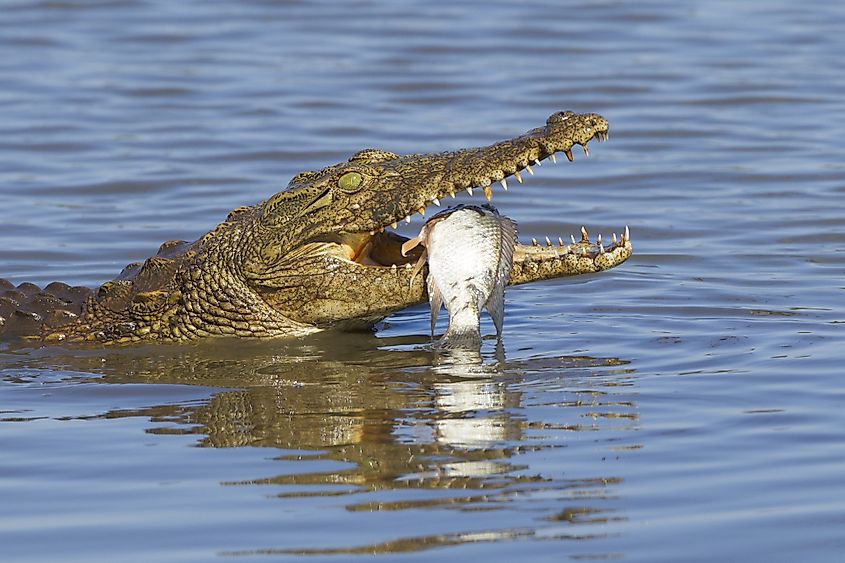
Hypercarnivores are those animals which consume other animals or meat for a minimum of 70% of their diet. The ‘hyper’ term indicates this tendency to rely heavily on flesh-based nutrients for survival. The remaining 30% (or less) of these animals’ diets comes from any combination of fungi and plants – often fruits. This dietary need for flesh and meat also means that hypercarnivores are apex predators – the top predator within their ecosystem. Indeed, the polar bear is one of the most notorious carnivores, as its diet is almost exclusively meat based. Roughly 90% of its food is derived from animals, usually ones it hunts directly.
Some prime examples of other hypercarnivores include lions, tigers and every other type of feline; crocodiles and snakes; a number of marine species such as sharks, dolphins and large fish; and primary birds of prey like eagles, falcons and vultures.
Mesocarnivores
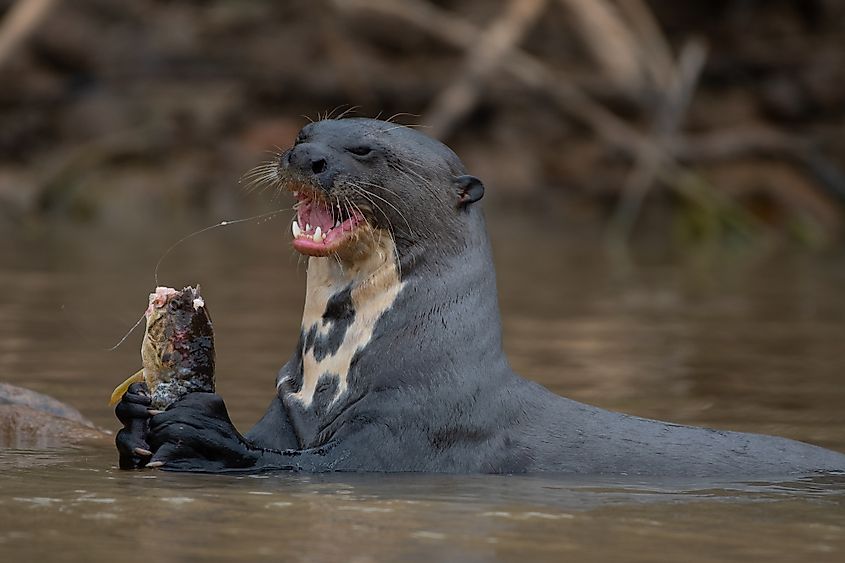
Animals in the mesocarnivore group have a diet which consists of 50 to 70% other animals, and the remainder plants and fungi. This second half of their diet is often rich in fruits, nuts, and vegetables, as well as fungi, like mushrooms. Mesocarnivores, while not defined by size, tend to be the smaller of the carnivores, and often occupy the middle tiers of food webs and ecosystems. However, in more urban areas and much of North America, the absence of former apex predators have made mesocarnivores the top consumers in their ecosystems. While wolves once dominated the top level of many food webs, their deterioration or absence in more developed areas has left mesocarnivores in the top tier. Also due to their size, mesocarnivores tend to be more abundant, and there can be several species in any given ecosystem.
Common examples of mesocarnivores are foxes who primarily feast on small rodents like mice, voles and lemmings, but will also eat insects, fruits, and vegetables when needed. Other examples include martins, otters, and weasels, as well as skunks and raccoons. Again, urban development has meant that many mesocarnivores can turn to human waste for food sources. While racoons eat fish, crayfish, eggs, nuts and grains in the wild, they are also well known for getting into and eating just about any type of human food waste – meat or otherwise.
Hypocarnivores
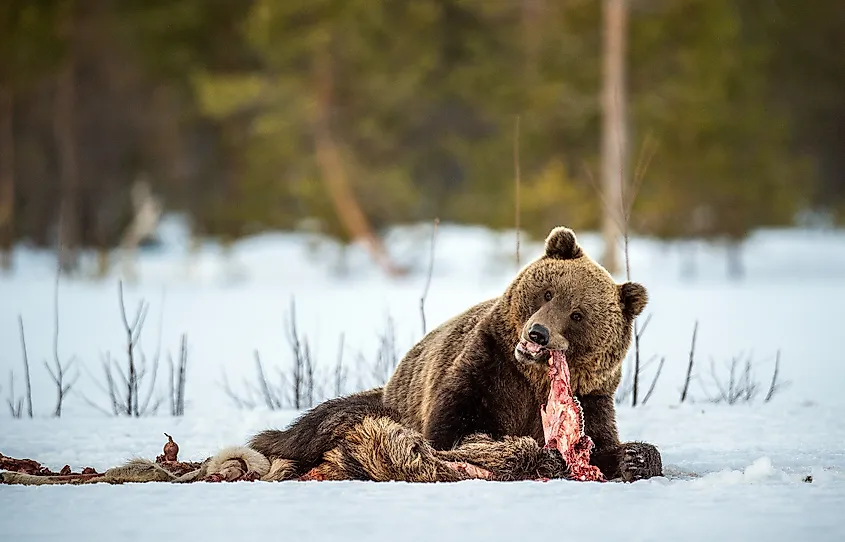
Like mesocarnivores, hypocarnivores eat a mixture of both animal and plant foods. These species eat roughly 30% meat or flesh based foods, such as other animals, and the remainder in grains, plants, fruits, roots or nuts. Because they eat both meat and plant based foods, these animals can also fall under the heading of omnivore.
The most common types of hypocarnivores are black and grizzly bears, which hunt large fish such as salmon, but also eat a great deal of berries and nuts.
Attributes of A Carnivore
Many carnivores, especially those in the upper ranges of meat consumption – namely, hypercarnivores – lack the ability to digest most plants.They tend to have shorter digestive tracts, and do not have the physiology needed to break down plant matter. Their entire physical makeup is designed and optimized for consuming meat.
These animals usually have large sharp incisor teeth and strong jaws. This, combined with sharp claws, help these predators to take down prey and consume it with ease. Flesh, cartilage, and bone are much more difficult to break down than plant matter, so these animals must have strong mouths to ensure they can ingest what they need.
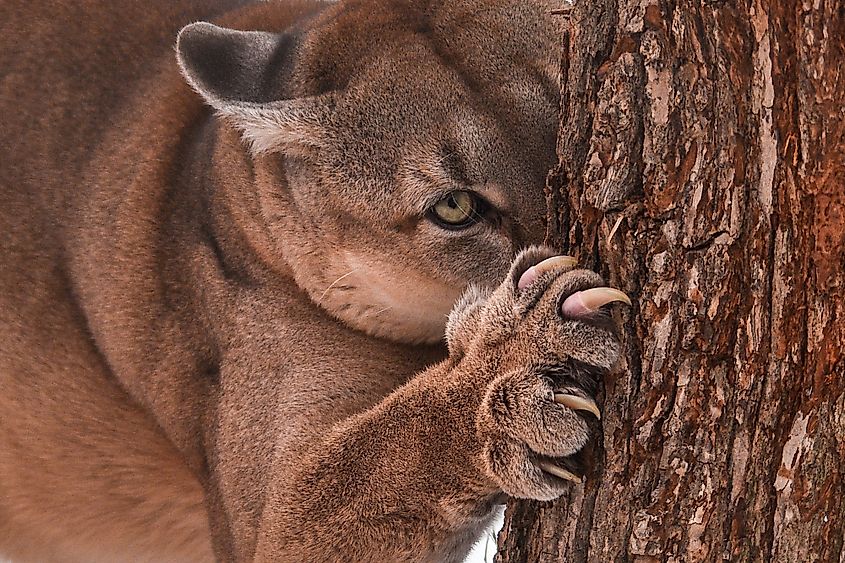
Similarly, predatory birds like owls and eagles have strong, prominent, and often hooked beaks, as well as powerful claws with formidable talons. Fangs, teeth, claws and talons are all indicators of powerful hunters and carnivorous creatures. These key aspects help both predators and scavengers capture, kill and consume their prey.
Role of Carnivores In Ecosystems
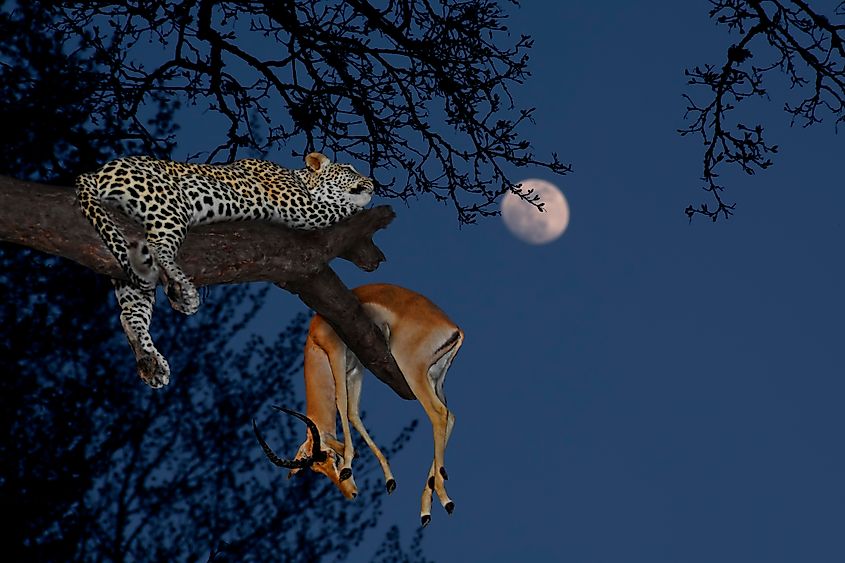
Carnivores play a key part in any ecosystem. Whether they are apex predators or mesocarnivores, their presence is extremely important to the inner workings of any biome or system.
Apex predators like lions or wolves help to keep other animal populations in check. Generally, those at the top of the food chain have smaller populations, but hunt and prey on more abundant consumers lower in the chain. An example of this are lions, which mainly hunt grazing animals like zebras, gazelles, antelope and wildebeests. These herbivores exist in huge herds and migrate over vast areas.
Without predators, the populations would run unchecked, but as a main food source for big cats, the grazers can maintain a healthy population while not overrunning a geological area. The lack of a predator can lead a species to run rampant, tipping the system off balance. If there was nothing to hunt the grazing African wildlife, vegetation would suffer greatly from a huge population over eating.
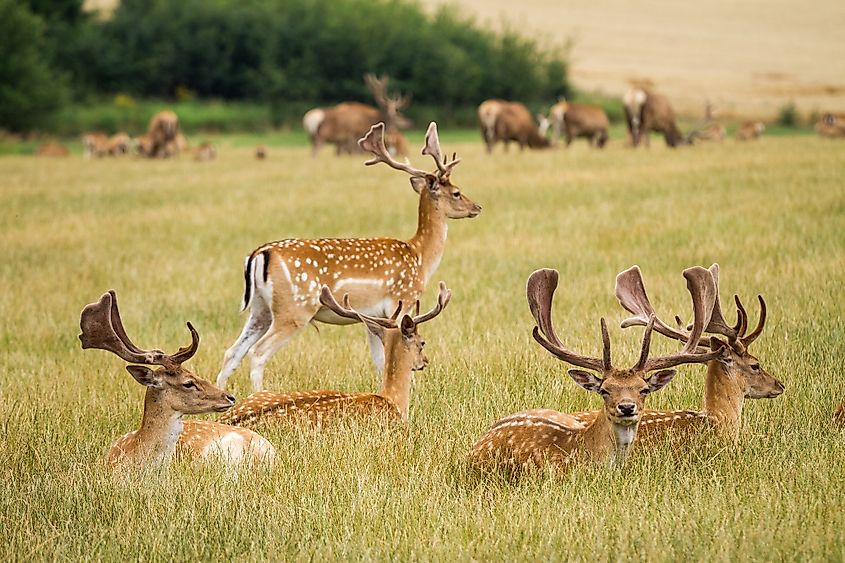
This tipping of the scales has been seen in numerous places around the globe. Notably, it is most often caused by human interference. Importing is the worst offender, as a species is brought to non native land, released, and left to roam free without any natural predators. In some cases, other animals will learn to hunt these new additions to their system, but usually, with no natural predators, a species can multiply at alarming rates. A famous example of this was when European rabbits were introduced to Australia. Without a natural food source, these rabbits were unaccustomed to desert living. As such, they turned to crops and farms for food, quickly causing devastating amounts of destruction across the continent. This overgrazing not only killed off large expanses of grass and plants, but in so doing caused erosion and washout.
All animals in a given ecosystem play a part in helping that system to stay balanced and to thrive. Along with maintaining stable populations, smaller mesocarnivores help to ensure biodiversity. As predators, they have a larger range, and tend to move across expansive areas. As they move, plant matter can become attached to thor fur and tails, and be transported great distances. This helps with plant pollination and diversity, as seeds and grains can be carried great distances from their original locations, helping flora to disperse and diversify.


 Users Today : 555
Users Today : 555 Total views : 469698
Total views : 469698